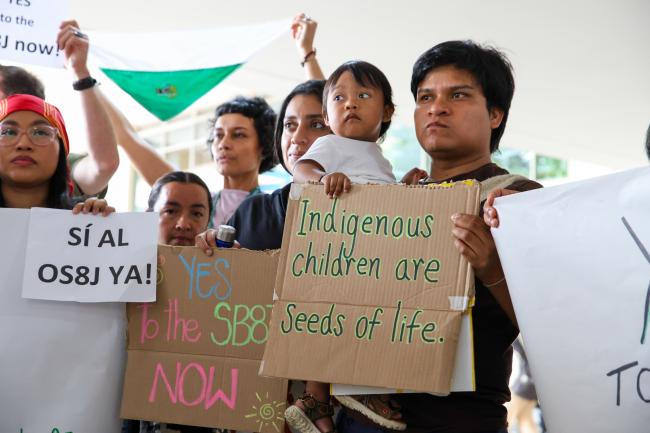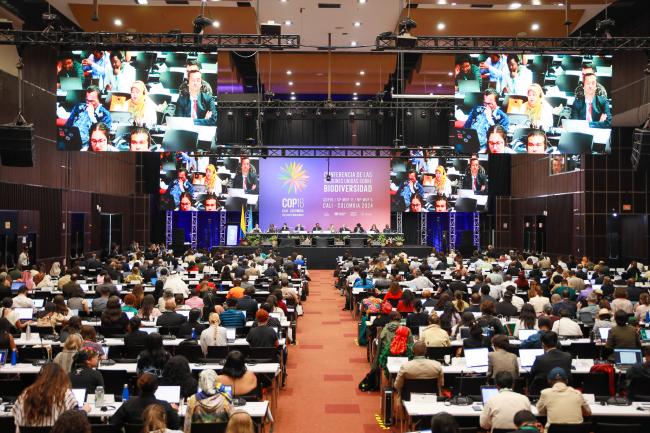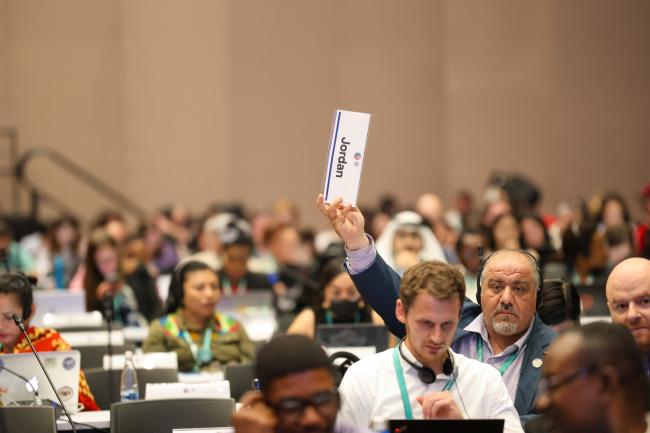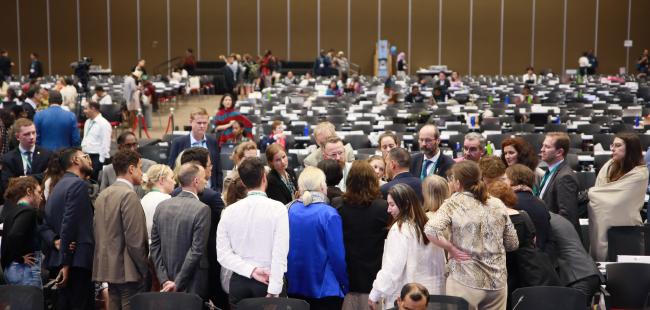“History is made today,” participants declared, as an evening plenary adopted the modalities for the modification of descriptions of ecologically or biologically significant marine areas (EBSAs) and the description of new areas. Over eight years in the making, and touching upon delicate political matters relating to the law of the sea, the modalities are expected to make a crucial contribution to the implementation not only of the Convention on Biological Diversity (CBD) and the Kunming-Montreal Global Biodiversity Framework (GBF) but also of the Agreement on marine biodiversity of areas beyond national jurisdiction (BBNJ Agreement).
Want to dig deeper into today's talks? Read the full Earth Negotiations Bulletin daily report.
A breakthrough was also achieved on items related to Indigenous Peoples and local communities (IPLCs) and traditional knowledge. Throughout the day, IPLC representatives staged silent protests outside negotiation rooms, where delegates considered three decisions on IPLCs’ roles and contributions to the objectives of the CBD. Late into its evening session, plenary was able to adopt the new programme of work on Article 8(j), resolving outstanding matters. Decisions on institutional arrangements and people of African descent, however, proved more challenging. Indeed, the lengthy deliberations that took place in Working Group I in the morning showed that divergent views persist on the establishment of a permanent subsidiary body under Article 8(j) of the Convention. While clean text was achieved on the decision on people of African descent, neither decision could be adopted before plenary was adjourned at 1:40 am.
On other agenda items, several matters remain outstanding. Following several sessions, the contact group on digital sequence information (DSI) on genetic resources finally addressed a Co-Chairs’ non-paper and heard a new proposal regarding monetary contributions to the DSI fund, combining options for payments based on total revenue and product-specific revenue. Some delegates stressed that the non-paper constitutes a good basis for further discussion, noting however that many issues require extensive deliberation.
Similarly, progress has been achieved on several aspects of the revised resource mobilization strategy, but differences remain on principled matters and items, including related to the strategy’s guiding principles and the enabling actions. On planning, monitoring, reporting, and review (PMRR), divergence ensued on the elements to form the basis of the global review.
Ministerial consultations are expected to take place on a number of agenda items, including on DSI, resource mobilization, and PMRR. In the meantime, Susana Muhamad (Colombia), President of the sixteenth meeting of the Conference of the Parties (COP), highlighted the High-level Segment’s message that “we are on the right path to achieve our collective goals.”
Plenary addressed organizational matters and heard presentations from Armenia and Azerbaijan, candidate countries to host COP 17 in 2026. On Thursday, a vote on the COP 17 host will take place by secret ballot.
Decisions adopted under the Cartagena Protocol on Biosafety and the Nagoya Protocol on access and benefit-sharing addressed:
-
compliance, risk assessment and risk management, and detection and identification of living modified organisms under the Cartagena Protocol on Biosafety; and
-
the ABS Clearing-House and information sharing under the Nagoya Protocol on ABS.
To receive free coverage of global environmental events delivered to your inbox, subscribe to the ENB Update newsletter.
All ENB photos are free to use with attribution. For the 2024 UN Biodiversity Conference, please use: Photo by IISD/ENB | Mike Muzurakis














































































